Inside Corteiz’s Frenzied Brooklyn Denim Exchange
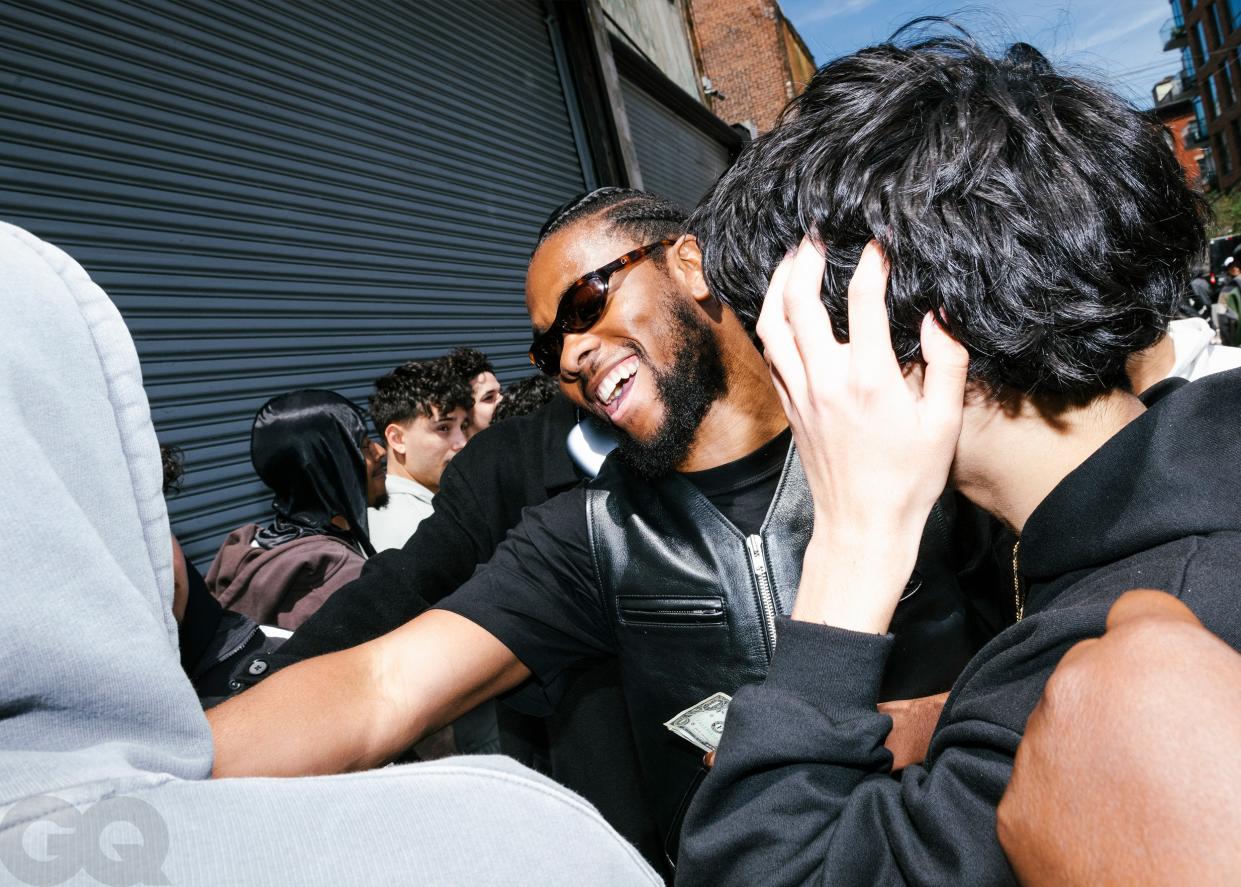
On most Saturday mornings, the post-industrial, post-gentrification blocks of northwest Greenpoint belong to the stroller pushers, the brunchers, the Alo-clad joggers. This particular Saturday is only slightly different. The women in fleeces and leggings toting fiddle leafs from the plant store and the young parents taxiing toddlers to Transmitter Park are there, yes. So too, however, are about 400 anxious 13 to 30 year olds, clamoring for the opportunity to give their pants away.
At about 11 a.m. on a block of West Street just south of Greenpoint Avenue, the air fills with the sound of skidding Citi Bike tires and recently released Air Jordans thudding against the pavement. Suddenly, frantically, a line is forming outside a nondescript warehouse. “DA GREAT DENIM EXCHANGE,” a pop-up event orchestrated by British streetwear label Corteiz, is about to begin—and it’s bringing a bit of streetwear hysteria into the neighborhood’s millennial equanimity.
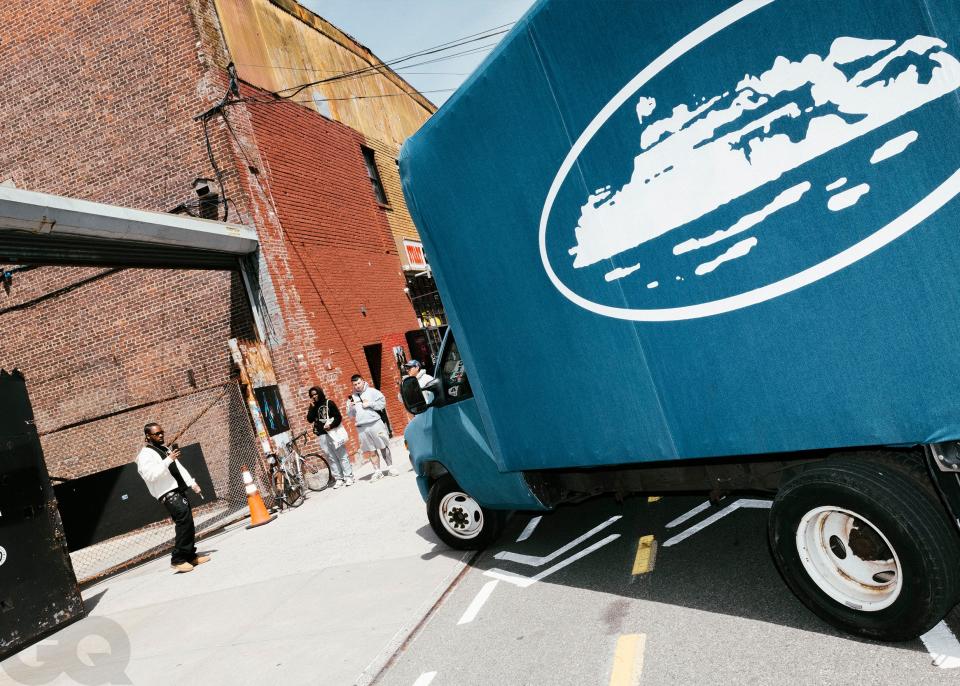
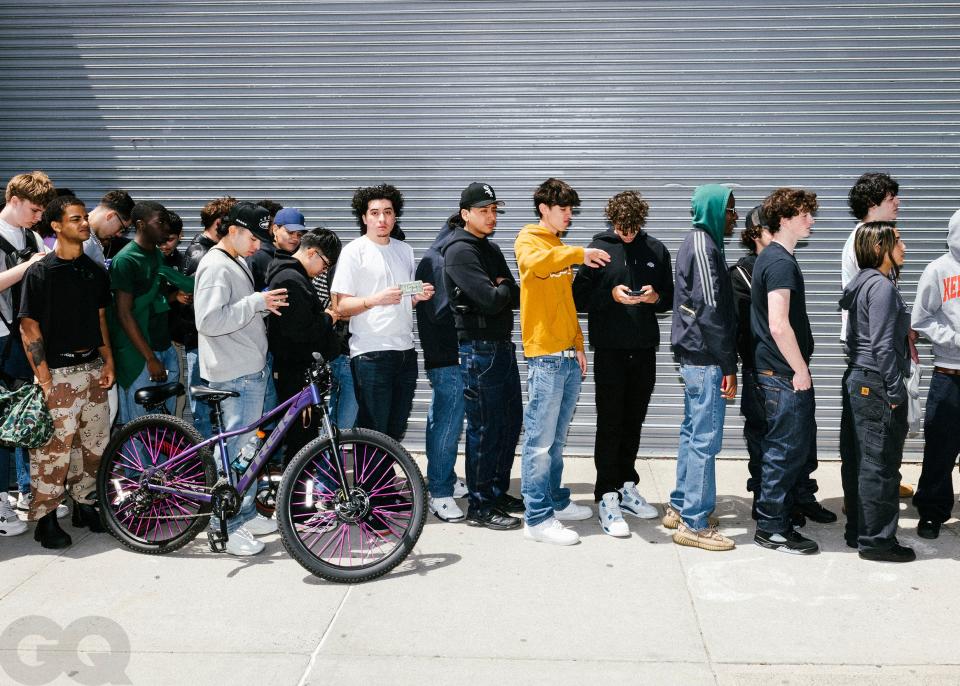
A day earlier, the brand announced via Instagram that in less than 24 hours it would be doing its second-ever event in New York. According to the post, the first 300 people to arrive and turn in jeans from a select list of brands (“LEVI’S 501s - TRUE RELIGION - CARHARTT JEANS/CARPENTERS - DICKIES - TOMMY HILFIGER - RALPH LAUREN - CALVIN KLEINS - S😜PREME - STUSSY - PALACE - AMIRI”) would receive a pair of Corteiz denim in return. Crucially, participants were required to wear their (clean) jeans to the event, hand them in, and walk out in their new Corteiz. The location wouldn’t be announced until right before the event.
At 10 a.m. on Saturday morning, a Google Maps screenshot of Queens Plaza was posted to the Corteiz Instagram story. More precise coordinates were promised within the hour—and when they arrived soon after, it prompted the horde that had already gathered by Queens Plaza Station to make the mad dash two miles south to Greenpoint. Hence, the current denim-crazed stampede.
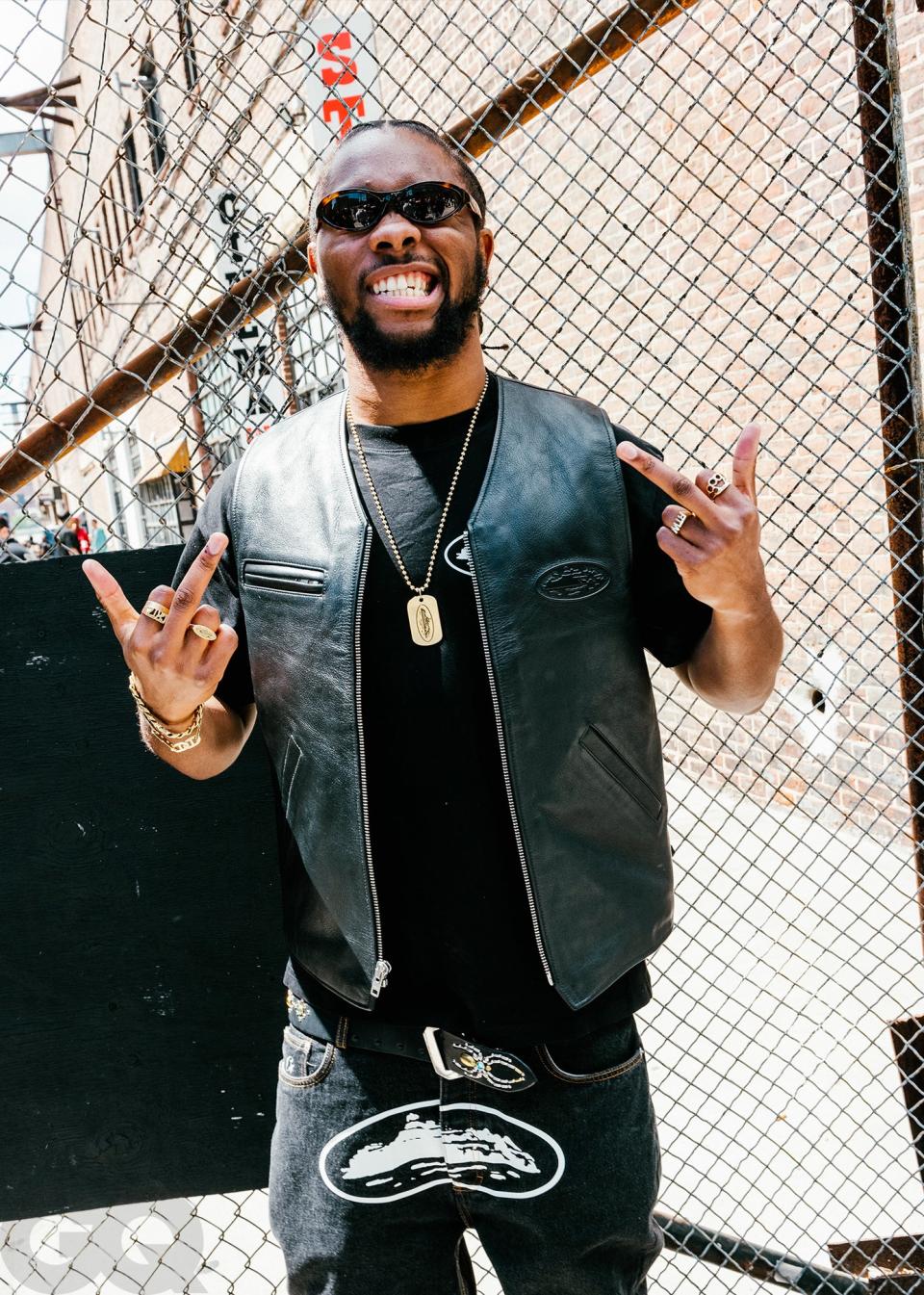
A group of teenagers in Carhartt painter pants scampered through the bike lane, flustering a cyclist. A kid in light wash Levi’s maneuvered his gray Citi Bike down the sidewalk with his friend seated in the basket. An onlooker wearing Birkenstocks, basketball shorts, and an expression of utter befuddlement stopped and asked the security guard at the front of the rapidly forming line: “What are they selling?” To which the burly, bearded man simply replied, “Jeans.”
The kids, however, weren’t there just for jeans. Many of them were there for Clint, the charming and enigmatic Londoner behind the brand. Known to fans as “Clint419” (or more commonly just “Clint”), Clint Ogbenna founded Corteiz in 2017. The story goes: Then a 20-year-old university student crashing on his sister’s couch in North London, Clint began the brand with three screenprinted crewneck sweatshirts. From there, with the help of a close-knit group of friends and collaborators, he built Corteiz brick by brick, savvily cultivating an air of hype around the brand. Corteiz rapidly rose the ranks of the London streetwear scene, fueled by a private Instagram account, a password-protected ecomm shop, and small releases of new clothing. Clint cultivated an exclusive club of supporters within the brand and an increasingly fervent fan base around the world. In the years since, the brand has grown from a bedroom project to a Virgil Abloh-endorsed, Nike-ordained, multinational phenomenon. All the while, Clint has been its brash, magnetic mascot.
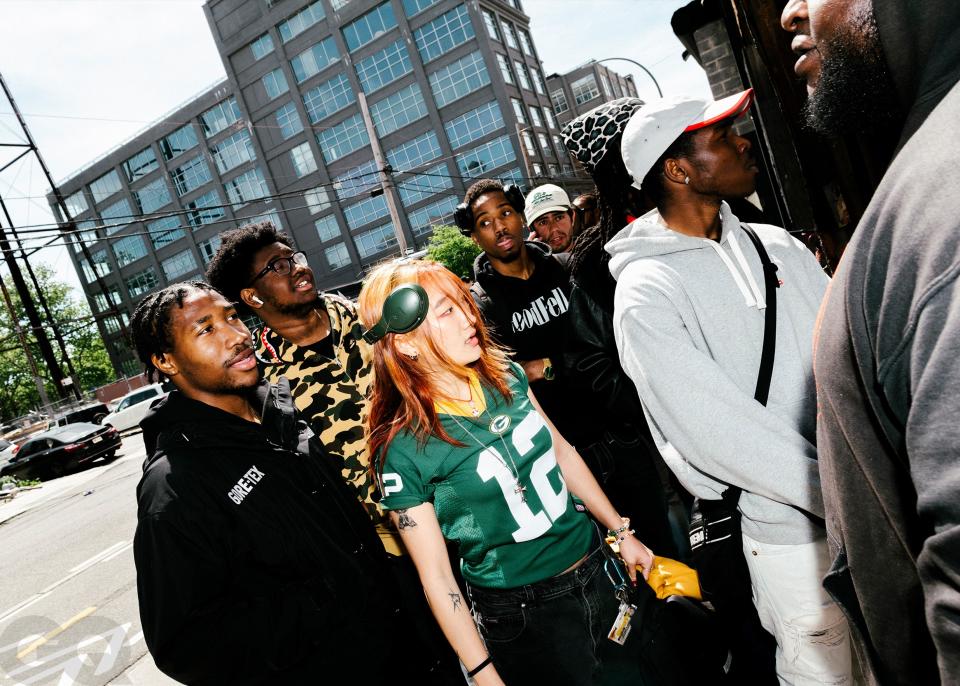
Tefike, a senior at NYU who I spot on West Street wearing a Yale School of Public Health crewneck (he will matriculate in the fall), tells me that he’s been following Clint and Corteiz since he was a high school student in Lagos. He cites Clint explicitly as what makes Corteiz so special: “It’s really inspiring to see someone who’s Nigerian, like I am, doing his thing.”
Rashan, a finance consultant, drove in from Valley Stream, Long Island, to trade in his gray Levi’s 501s. He likes how Clint’s bravado suffuses the brand’s messaging. Beneath his blue Corteiz windbreaker and gold Corteiz chain, he’s wearing a white Corteiz graphic tee. He reads the print aloud to me: “‘If you don’t like the garms, dial 0208-GO-SUCK-UR-MUM.’ That’s not my words though,” he says. “That’s Clint’s words.”
Maddie, a stylist from Crown Heights, says she’s a fan of the creative ecosystem that Clint has built around the brand. “I’m a fan of Corteiz and the media that is around Corteiz. All the people that they work with, all the photographers…They have really cool and innovative shoots and marketing.”
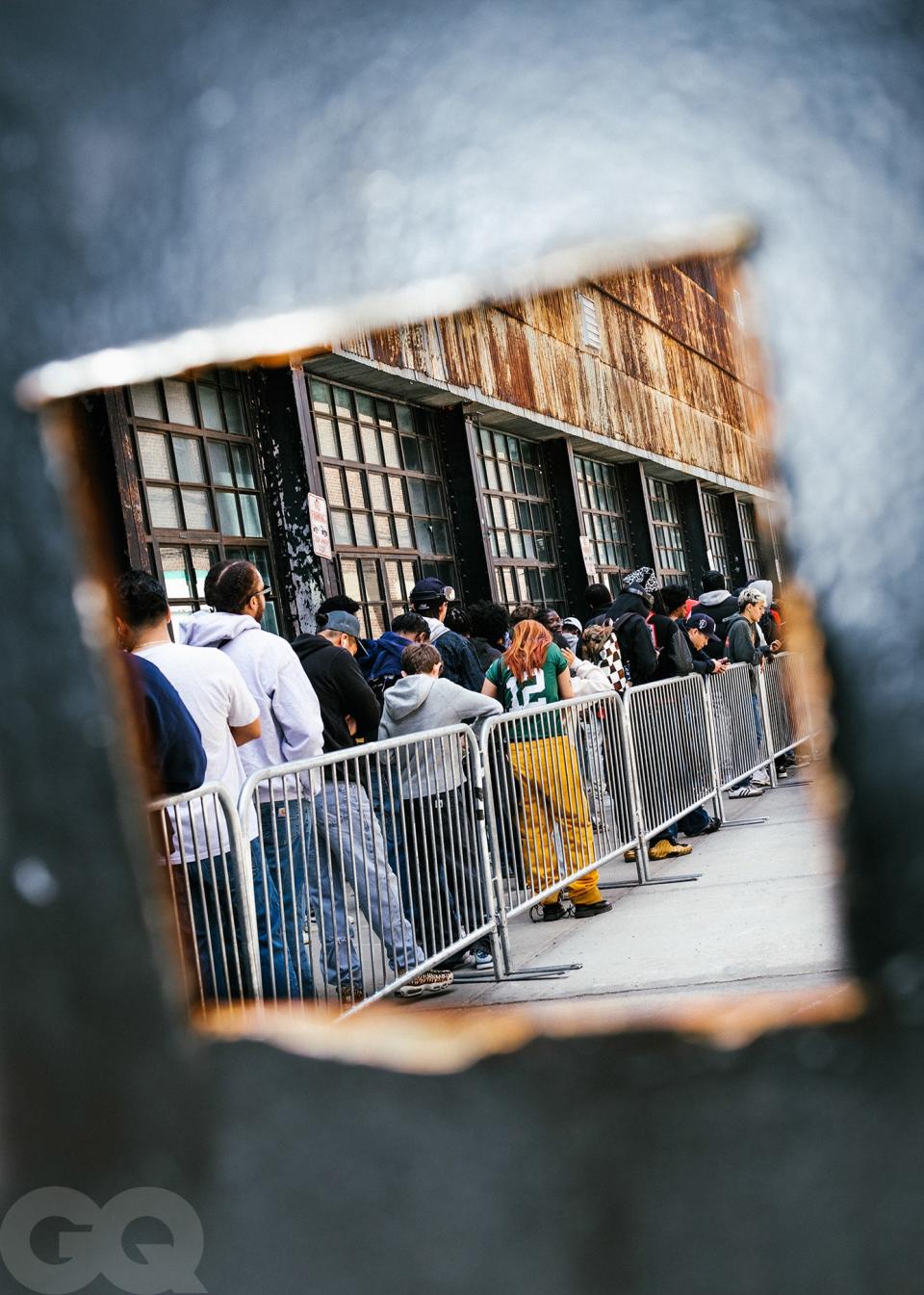


Many of those I speak to seem to view Clint almost as a big brother figure: He’s tall, he has cool clothes and cool friends, but he also feels familiar, like—with some time, money, and effort—you could maybe be him.
Chris, a highschool student from Queens who has already begun calling out line-cutters (“I’m snitching on everybody! I really wanna get these jeans!”), puts it this way: “The fact that he made all this shit in his room by himself, it’s just crazy to me…It really inspires me to do what I wanna do.”
While I’m chatting with the eagerly waiting fans, a box truck wrapped in a blue, denim-like fabric with a large, white Corteiz logo emblazoned on the side pulls into the warehouse lot, sending a ripple of excitement through the block-long line. “Yo, someone take a photo!” a kid in faded True Religions pleads, pawing frantically at his iPhone. “My phone’s buggin’ out!”
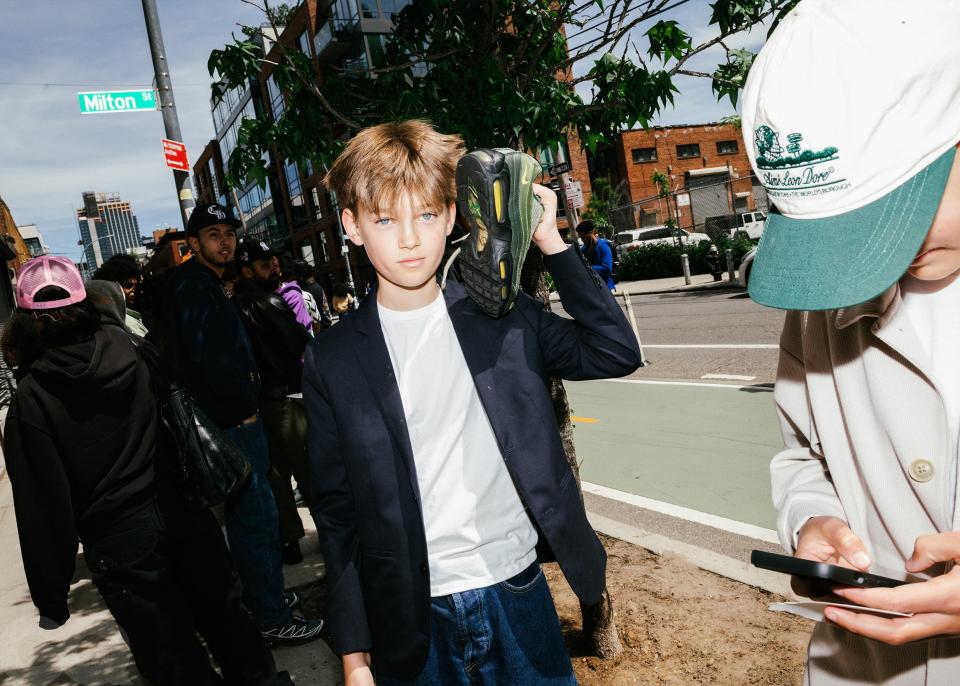
Like a certain New York City hype-monger before it, Corteiz has built a wheelhouse around iterating, remixing, and otherwise drawing inspiration from staples of ’90s hip-hop culture and sports and leisurewear—nylon tracksuits, heavyweight hoodies, racing leathers, rugbies, and puffer jackets. Where it has strayed from its streetwear ancestors is in its dynamic, unconventional approach to marketing and brand outreach. In lieu of traditional drops at a specified time and date, Corteiz emissions come seemingly at random through a locked ecommerce site whose password one often has to divine from clues in the brand’s social media activity.
Where other brands might do a pop-up and sell their wares out of a temporary retail location, the London brand’s activations often take place in the literal streets with products usually given away for free. A 2019 T-shirt giveaway resulted in a frantic, 50-person mad dash through busy roads of London’s Soho. An even bigger scene engulfed Lagos’s Harbour Point during a shirt handout in December 2022. Today’s event in Brooklyn, meanwhile, is a redux of a 2022 London affair called “DA GREAT BOLO EXCHANGE,” during which Clint convinced hundreds of attendees to exchange their North Face Nutpses and Monclers for a Corteiz puffer jacket. Last year, during the three-city launch of their now-signature Air Max 95 collaboration with Nike, Clint and Co. took over a deli on Manhattan’s Lower East Side, commandeered a public bus in Paris, and challenged London’s youth to a crossbar shootout. Through these and their many other exploits, the brand has achieved cult status and fashioned Clint into a kind of tracksuit-peddling folk hero.
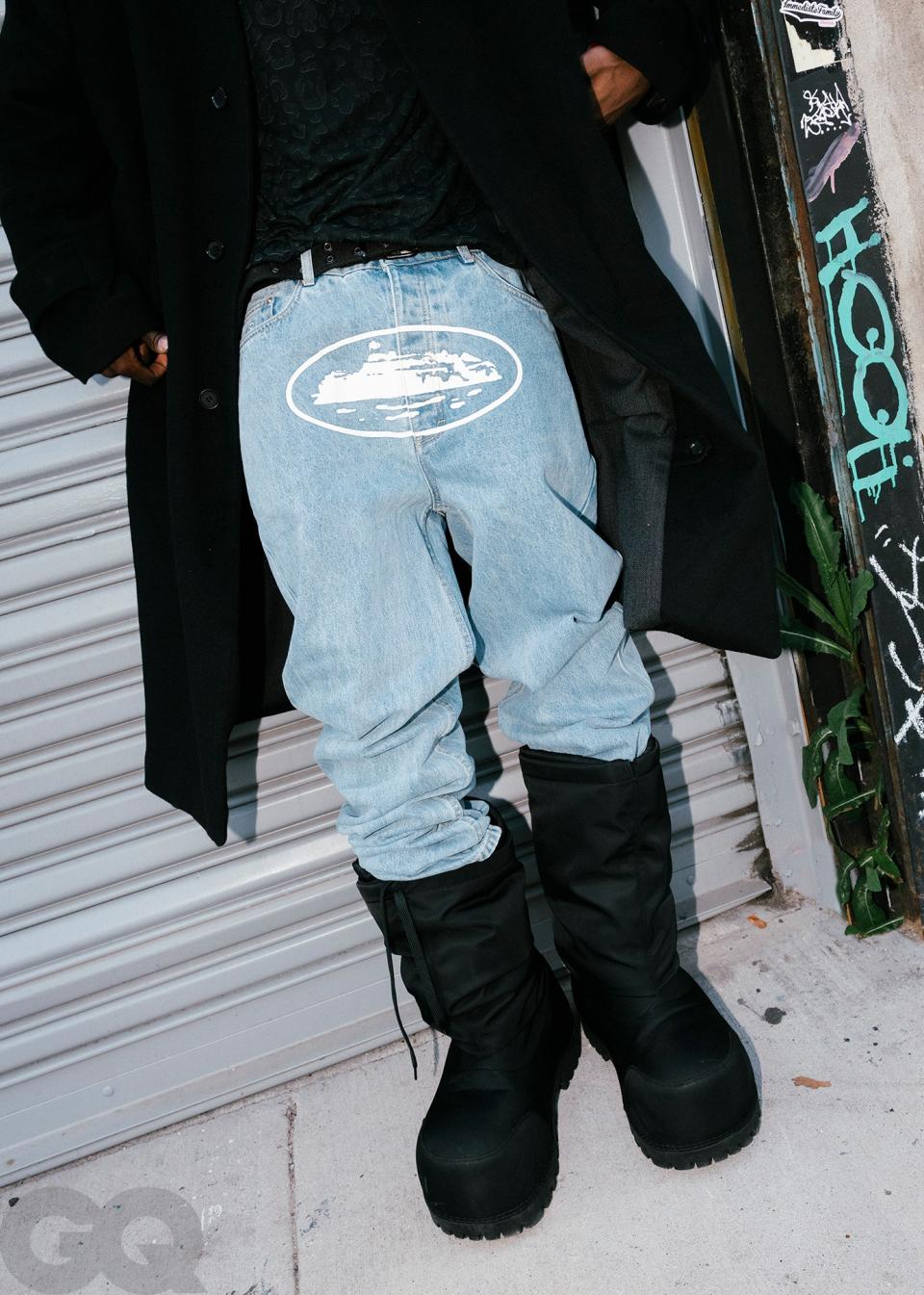
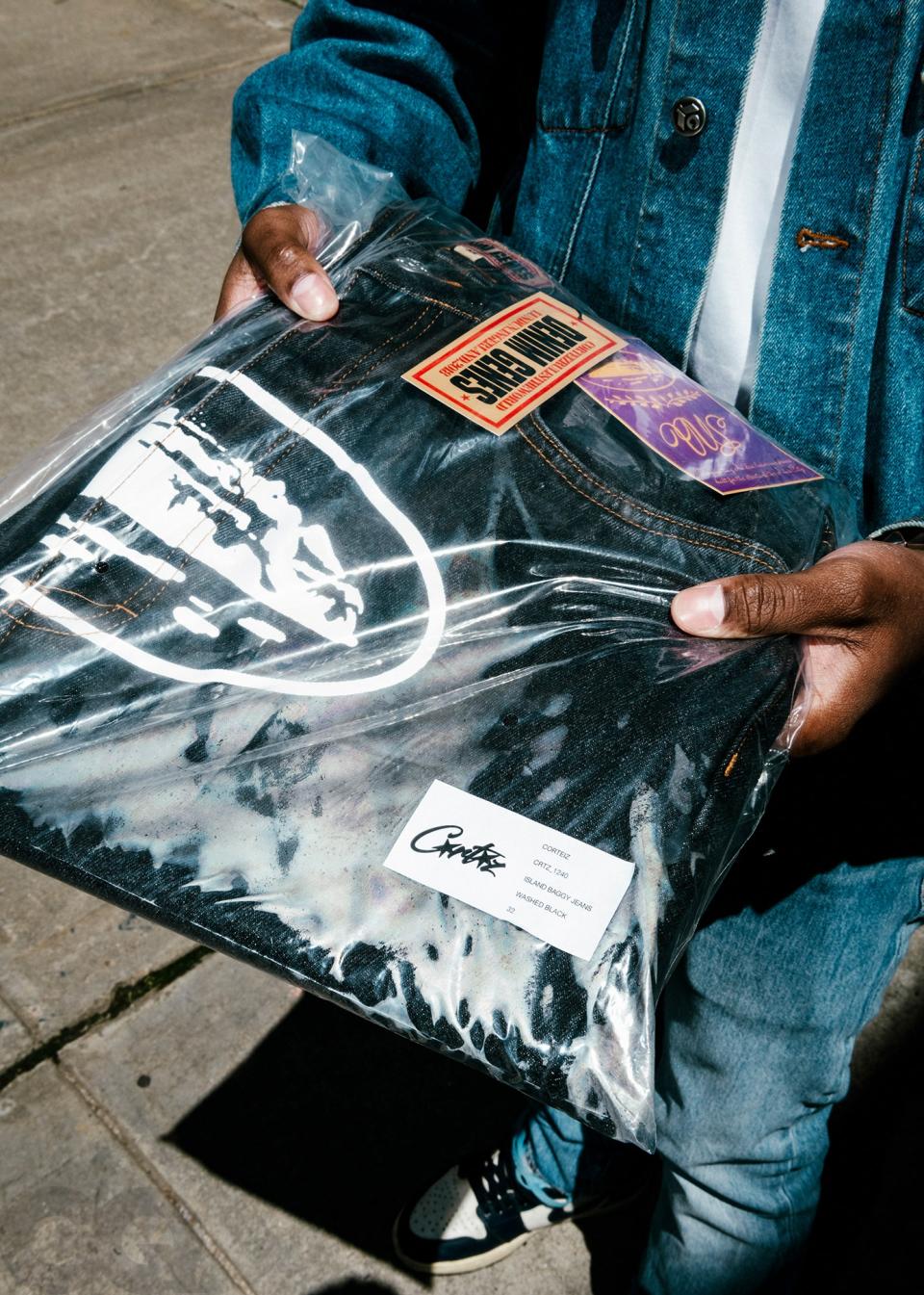
Ryan, a student from Ridgefield, Connecticut claims he couldn’t sleep the night before the exchange. “I’ve been up since 7 o’clock last night, excited, anticipating! Cleaning, keeping my mind occupied trying to get ready for this.” His friend Diego got two hours of sleep before hopping on the LIRR at 8 a.m. to get into the city.
Further down the line, I find George from Tribeca—a diminutive, blond, 13-year-old in a navy blazer, white T-shirt, denim shorts, and black beefroll penny loafers. He says he knows Clint and the Corteiz gang personally, but claims that due to an NDA he can’t specify exactly how. George is a burgeoning fashion professional himself. He tells me he has a design internship “at a certain brand,” and that soon he’ll be debuting his own line (the name of which is still confidential). I point out that his jean shorts don’t qualify him for the exchange. He says, “I’ve texted all my connections.” With him, he also has a pair of “Gutta Green” Corteiz Air Max 95s in an Aimé Leon Dore tote. He hopes he can perhaps use them as collateral.

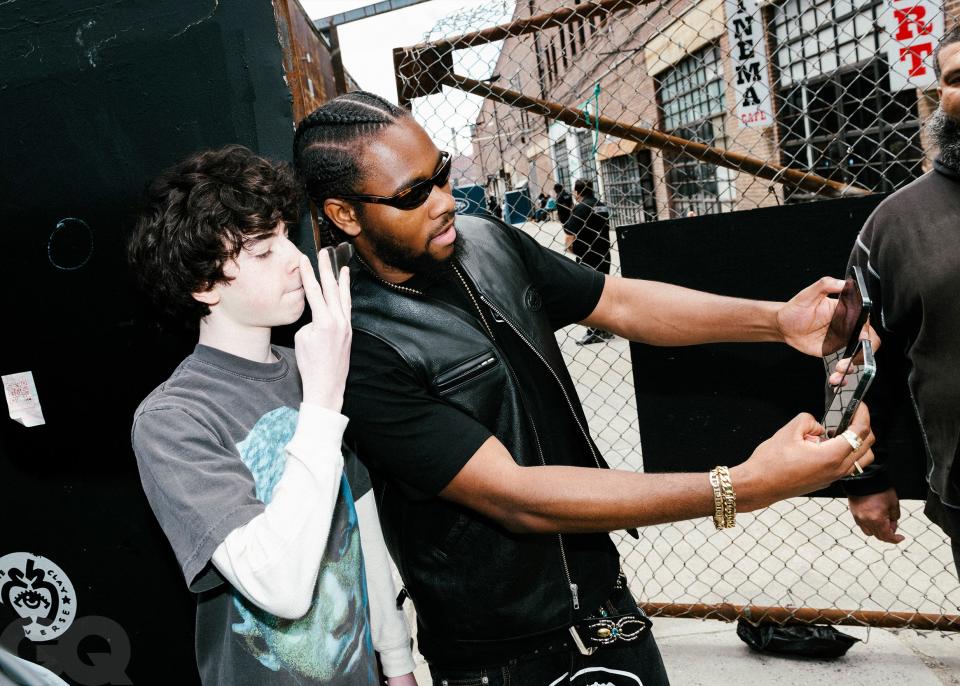
Suddenly, Clint emerges. He’s wearing tortoise Corteiz wraparound sunglasses, a leather Corteiz vest over a black T-shirt, Supreme Timberland boots, and dark Corteiz denim supported by a studded Corteiz leather belt. He greets starstruck attendees in line and begins handing out dollar bills that double as tickets. Each bill has “RTW” (shorthand for their slogan “Rules the World”) inscribed on it alongside a number, indicating the receiver’s place in line. As he approaches the middle of the line, he scolds a clump of overeager goons in Bape hoodies for pushing and grabbing. After handing out the 250th ticket, Clint disappears once again.
Max, an investment banker who lives on the Lower East Side, reflects on the Corteiz chief’s presence: “Lotta aura.”
Soon, the line begins to move and the first lucky devotees emerge in their new trousers. Fitpics abound. Gabriel Moses—the photographer, filmmaker, and frequent Corteiz collaborator—meanders up and down the line. George, of the confidentially-named brand, spots him and asks for a photo. After the pair chat, Moses disappears briefly, and then returns with a copy of his recently-released monograph Gabriel Moses: Regina as a gift for the young creative-director-to-be.
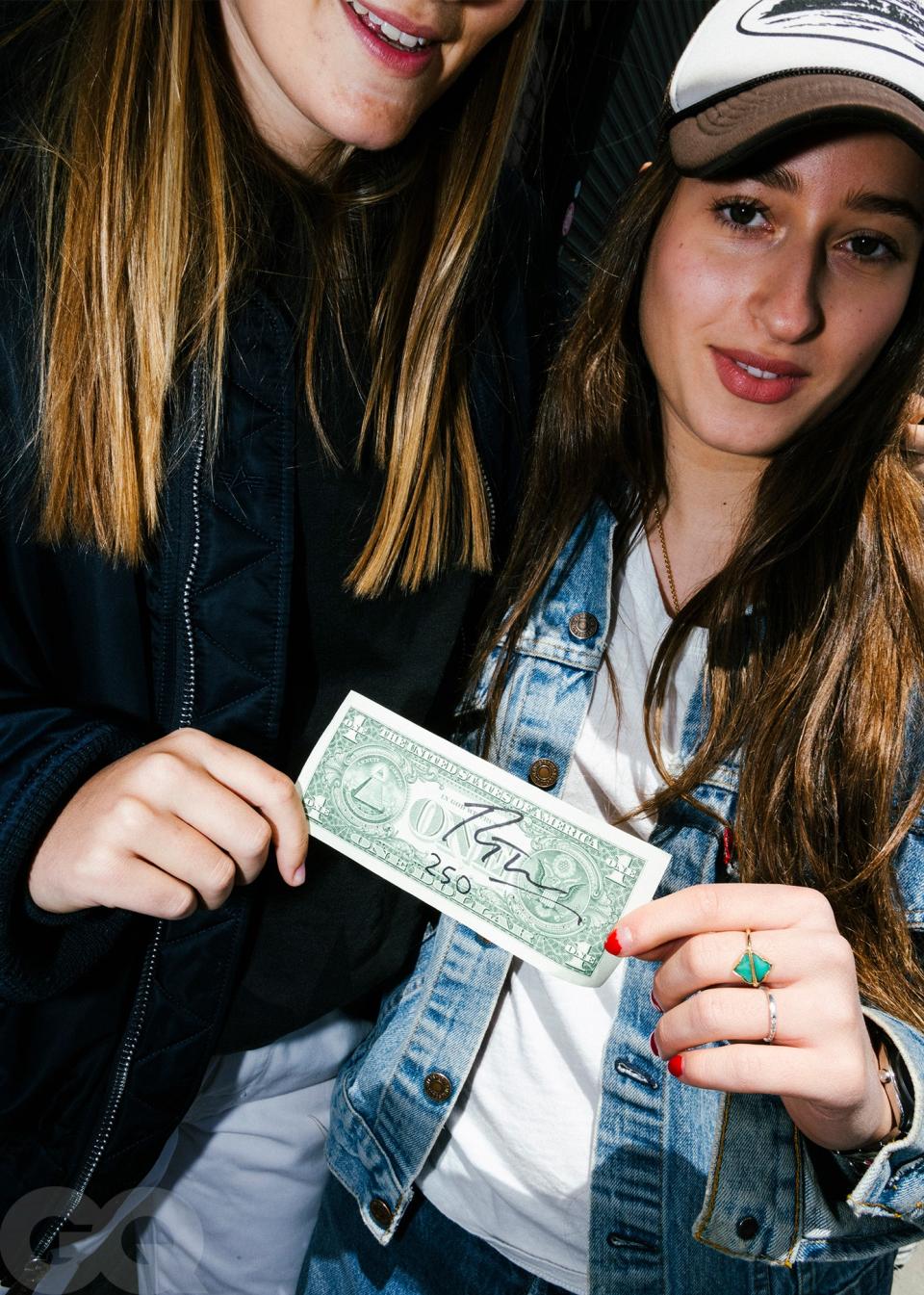
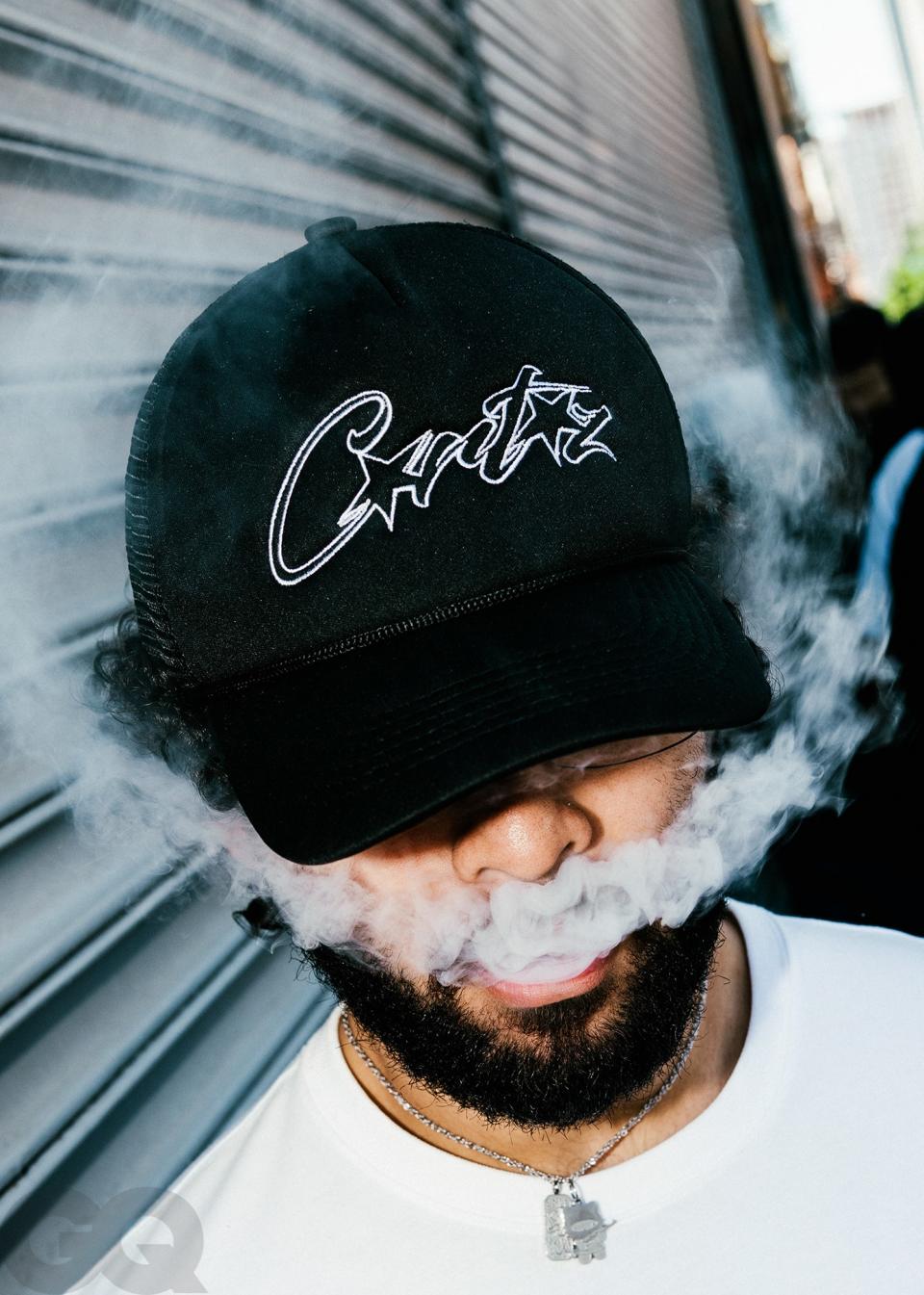
Toward the front of a line, I notice a young man in a Nike NOCTA windbreaker hovering anxiously by the entrance. Conspicuously, he’s holding a pair of light wash Corteiz denim instead of wearing them proudly like the growing crowd of young men loitering on the street. His name is Zohaib. He’s 23. Last night, in order to be here on time, he drove from Allentown, Pennsylvania to crash at his cousin Ayem’s house in New Jersey. Zohaib tells me that once he finally got to the front of the line, he asked for a 32 waist. Once in the changing room, he found that they were too small for his liking, but the Corteiz staff wouldn’t allow him to exchange them for a 34 waist. Now, he’s hoping to find someone willing to swap with him. I watch as he offers his 32 to a group of Brooklyn teens. One inspects them, assesses how well they might fit, and offers to swap for $400. “Why would I do that?” Zohaib says.
As the line wanes and the final pair of jeans are handed out, I watch Zohaib skulk away in defeat. Marco, a teen from Jackson Heights, exits beaming in black Corteiz denim. I ask what makes him so excited about Corteiz. He smiles. “It’s just the energy, man.”
In the end, Corteiz donated the 300 pairs of exchanged jeans to youth charities in New York—and added at least a few new lifelong devotees to its rapidly expanding audience.

Originally Appeared on GQ
More Great Style Stories From GQ
For Years, Sylvester Stallone Secretly Owned a Legendary Watch—Now It's Up for Sale
Take a Closer Look at Usher’s $5 Million Met Gala Watch
Barry Keoghan Doesn’t “Like the Idea of People Being Paid to Act”
Why Tailors Hate Skinny Suits
12 Years Later, Air Jordan Is Finally Re-Releasing a Legendary Olympic Sneaker
Not a subscriber? Join GQ to receive full access to GQ.com.

